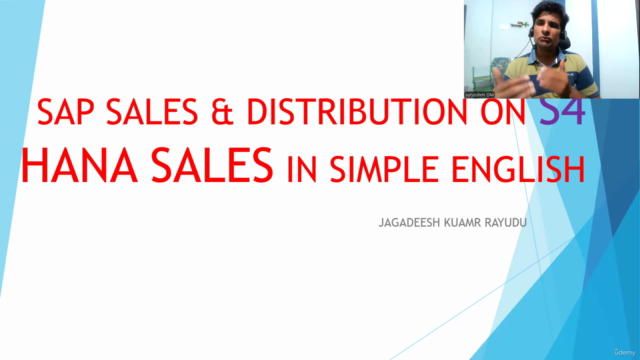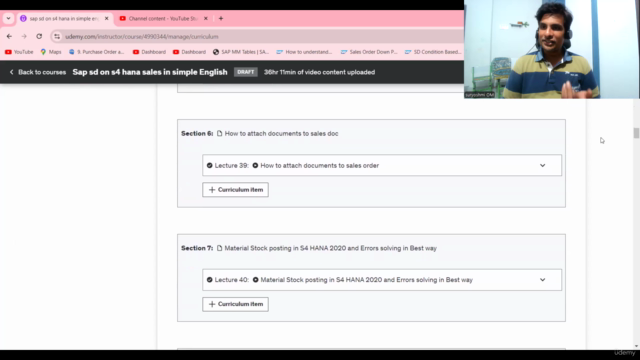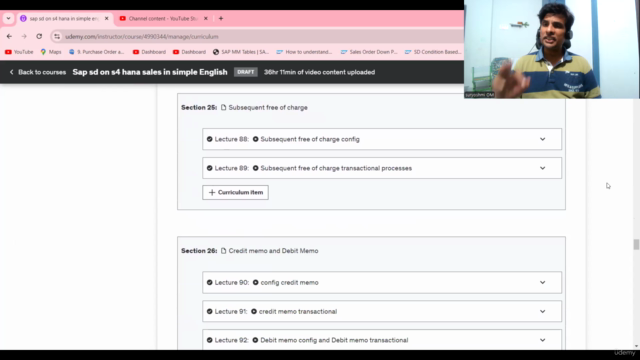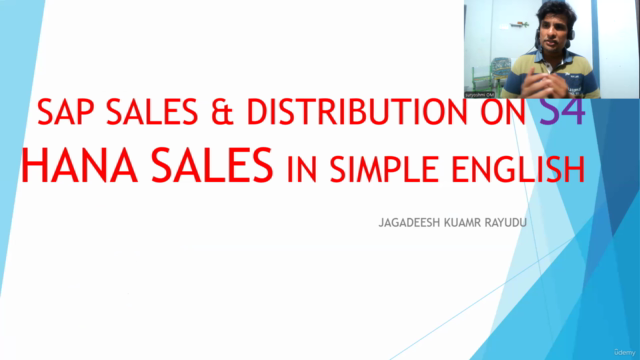SAP SD ON S4 HANA SALES IN SIMPLE ENGLISH WITH PRACTICALS

Why take this course?
To cover the vast array of topics you've mentioned, I'll provide a structured guide on how to approach each subject within SAP S/4HANA (S4 HANA) Sales and Distribution (SD) module. This guide will help you understand the processes, configurations, and considerations for each topic. Let's break it down:
Course Overview
1. Sales Master Data Configuration
- General Data: Classification, Account Determination, Customer and Vendor account groups.
- Billing Tab: Account Assignment Groups, Invoice Dates, and Billing Runs.
- Shipping Tab: Delivery Tolerance settings, Over/Under Delivery scenarios, Partial Delivery handling.
- Payment Conditions: Payment terms and conditions for customers and vendors.
2. Sales Order Creation
- One-Step vs Two-Step Process: Understand the difference in processing using Inter-Company Stock.
- Customer-Order Related Features: Sales Quotations, Sales Orders, Confirmations, and Deliveries.
- Inter-Company Settlement: Handling transactions between different company codes within the same legal entity or across entities.
3. Billing Processes
- Periodic Billing: How to generate periodic invoices for items delivered not in a settlement period.
- Milestone Billing: Invoice creation based on specific milestones in the delivery process.
- Reverse Pricing: Handling returns and credit notes, Price Determination Reversal for Customers.
- Pricing Scenarios: Volume-based, time-dependent, promotional prices, customer price condition records.
4. Output Determination and Settlement
- Classical Output Determination: Using SAP NetWeaver Commerce (NACE) for traditional output determination processes.
- New Output Determination: Understanding Advanced output determination using S/4HANA capabilities.
- Settlement Processes: Inter-Company and Intra-Company settlements, inter-company inventory transfers.
5. Sales Promotions and Sale Deals
- Managing discounts, special pricing, and promotional campaigns for customers.
- Implementing complex sale deal scenarios with conditions and compensations.
6. Fiori Apps in S4 HANA SD
- Exploring the new user experience with Fiori apps for Sales Order Creation, Billing, and Output Determination.
Technical Configuration Steps
1. Maintain Customer Master Data
- Enter General Data like business role, communication data, delivery block indicators.
- Maintain Account Assignment Groups for billing and settlement purposes.
- Define customer-specific conditions (Pricing Condition Records).
2. Configure Inter-Company Settlement
- Set up inter-company relationships between company codes.
- Define stock transport orders (STOs) with postings to differentcompany codes.
3. Implement Billing Runs
- Configure periodic billing parameters for delivery dates and inventory levels.
- Schedule and run billing runs according to the settlement period calendar.
4. Set Up Shipping Conditions
- Define over/under tolerance limits for partial deliveries.
- Maintain external IDs for legacy customer data integration.
5. Output Determination Setup
- Configure output determination types and conditions using NACE or the new S4 HANA approach.
- Test output determination scenarios in a development or test system before going live.
Periodic Training and Real-Life Scenarios
1. Practical Exercises
- Use sample data to practice configuring master data, creating sales orders, running billing processes, and handling output determination.
- Work through real-life scenarios to understand the flow of goods, money, and information in S4 HANA SD.
2. Integration and Collaboration
- Understand how S4 HANA SD integrates with other modules like Materials Management (MM), Accounting, and Treasury.
- Learn how to handle exceptions and errors that may occur during the sales process.
Project Methodology Concepts
1. Planning and Execution
- Define clear objectives for your S4 HANA SD project.
- Communicate roles and responsibilities to project team members.
2. Change Management
- Prepare users for new processes and features in S4 HANA SD.
- Provide training and support throughout the transition period.
3. Monitoring and Reporting
- Regularly review system performance, user adoption, and process efficiency post-implementation.
- Adjust configurations as necessary to meet business needs.
Remember, S4 HANA SD is a complex module that requires a comprehensive understanding of business processes, system configuration, and technological capabilities. It's advisable to work with experienced S4 HANA professionals during the implementation phase to ensure a successful transition and ongoing operation.
Course Gallery




Loading charts...